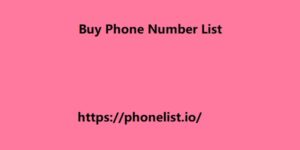A well-structured sales funnel is essential for driving revenue and growth. The key to a successful funnel lies in generating high-quality leads that can be nurtured and converted into paying customers. Here are some of the best lead sources to consider:
Content Marketing
Create valuable content: Produce informative blog posts, articles, whitepapers, and ebooks that address your target audience’s pain points.
Optimize for SEO: Ensure your content is search engine optimized to increase its visibility and attract organic traffic.
Utilize lead magnets: Offer valuable resources like free trials, demos, or templates in exchange for contact information.
Social Media Marketing
Engage with your audience: Interact with potential customers on platforms like LinkedIn, Facebook, and Twitter.
Run targeted ads: Use social media advertising to reach specific demographics and interests.
Leverage social proof: Showcase customer testimonials and reviews to build trust and credibility.
Email Marketing
Build an email list: Collect email addresses from website visitors, social media followers, and event attendees.
Send targeted Buy Phone Number List campaigns: Segment your email list based on demographics, interests, or behavior to deliver relevant content.
Nurture leads: Use email marketing to guide potential customers through the sales funnel and encourage conversions.
4. Search Engine Optimization (SEO)
Optimize your website: Ensure your website is mobile-friendly, fast-loading, and easy to navigate.
Target relevant keywords:
Conduct keyword research to identify terms that your target audience is searching for.
Build quality backlinks: Acquire high-quality backlinks from reputable websites to Advertising Resource improve your search engine ranking.
5. Pay-Per-Click (PPC) Advertising
Create targeted ads: Use platforms like Google Ads and Bing Ads to display your ads to relevant audiences.
Optimize for conversions: Continuously monitor and improve your PPC campaigns to maximize ROI.
Retargeting: Show ads to users who have previously visited your website but didn’t convert.
Partnerships and Referrals
Collaborate with complementary businesses: Partner with companies that serve similar target audiences.
Offer referral incentives: Encourage satisfied customers to refer your business to their friends and family.
Join industry associations: Network with other professionals in your field to identify potential leads and partnerships.
7. Events and Networking
Attend industry conferences and trade shows: Connect with potential customers and partners in person.
Host your own events: Organize webinars, workshops, or meetups to showcase your expertise and generate leads.
Join local business groups: Network with other entrepreneurs and professionals in your community.
8. Sales Prospecting Tools
Utilize CRM software: Track leads, manage interactions, and analyze sales data.
Employ lead generation tools: Use tools like LinkedIn Sales Navigator or ZoomInfo to find and qualify potential prospects.
Leverage data enrichment: Enhance your lead data with additional information to personalize your outreach.
9. Referral Programs
Incentivize referrals: Offer rewards to existing customers who refer new business.
Make it easy to refer: Provide referral links or forms to streamline the process.
By effectively combining these lead sources, you can create a robust sales funnel that attracts high-quality prospects, nurtures them through the buying journey, and ultimately drives sales growth.

